Three Proposed Model
DNA replication is semi-conservative
- Conservative model
- Semiconservative
- Dispersive

DNA Replication is Bi-directional
Test Methods
-
Electron Microscopy
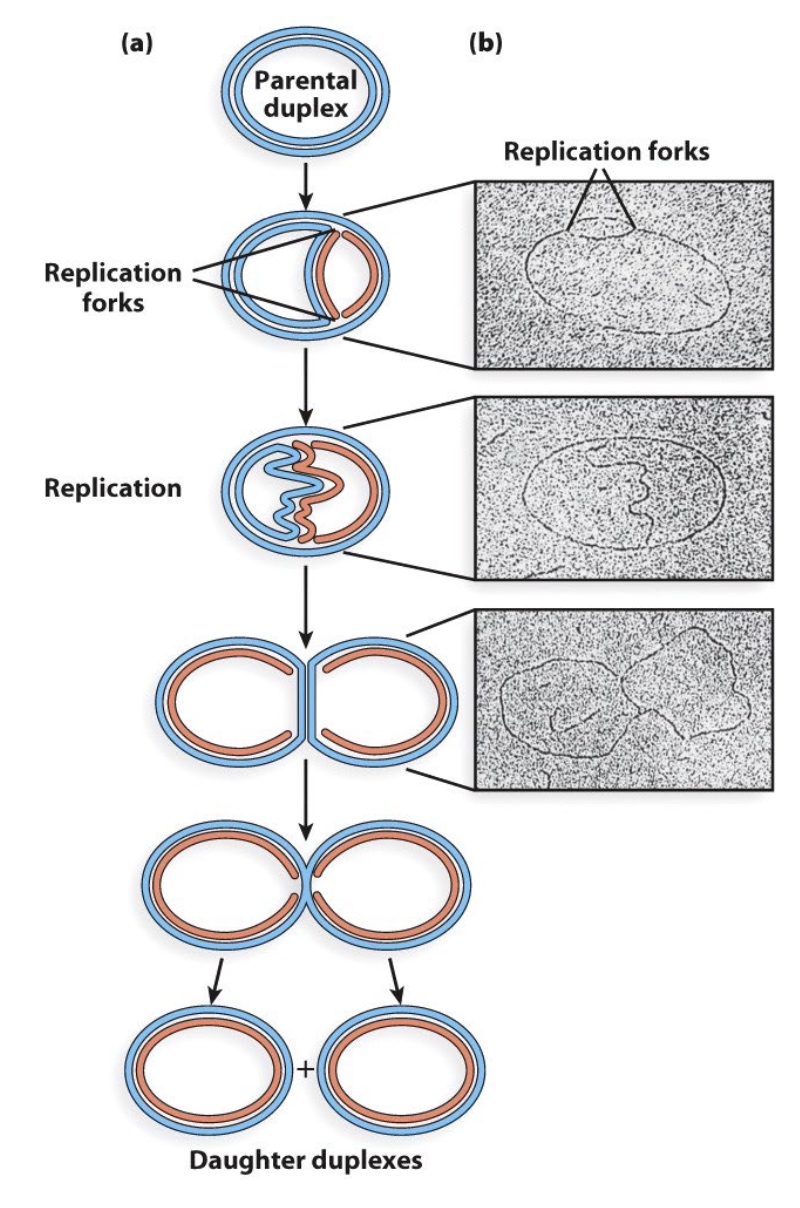
-
Use pulses of [3H]dTTP to visualize eukaryotic replication bubbles as they migrate
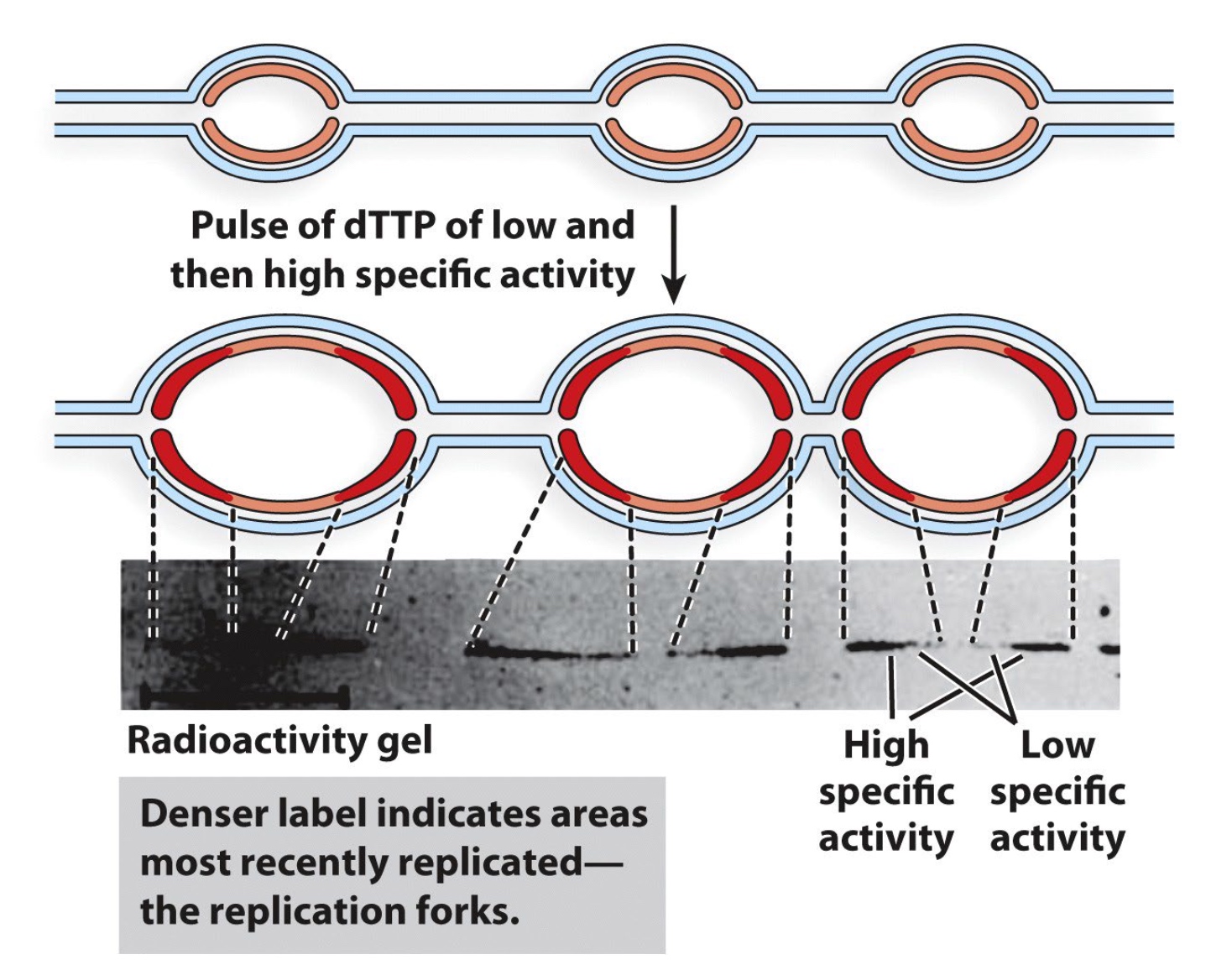
DNA Replication is Semidiscontinuous
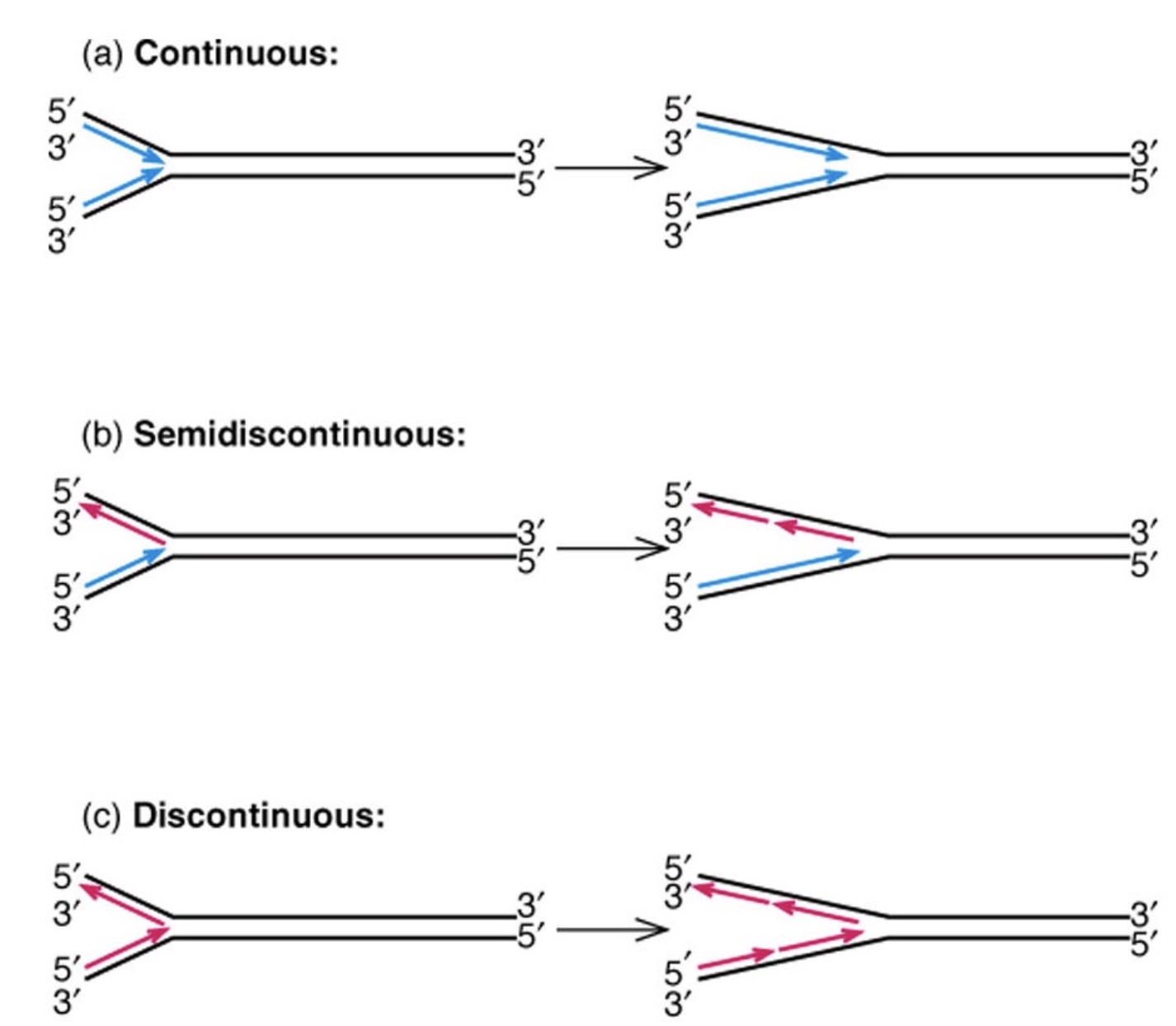
Testing
- Infect bacteria with T4 bacteriophage
- Give short pulses of 3HdTTP --> replicating bacteriophage will incorporate them into the newly replicated DNA
- Measure the sizes of the fragments by ultracentrifugation
Predictions
- At least a half of the pieces should be short at early time points
- The short pieces should persist if there is no DNA ligase
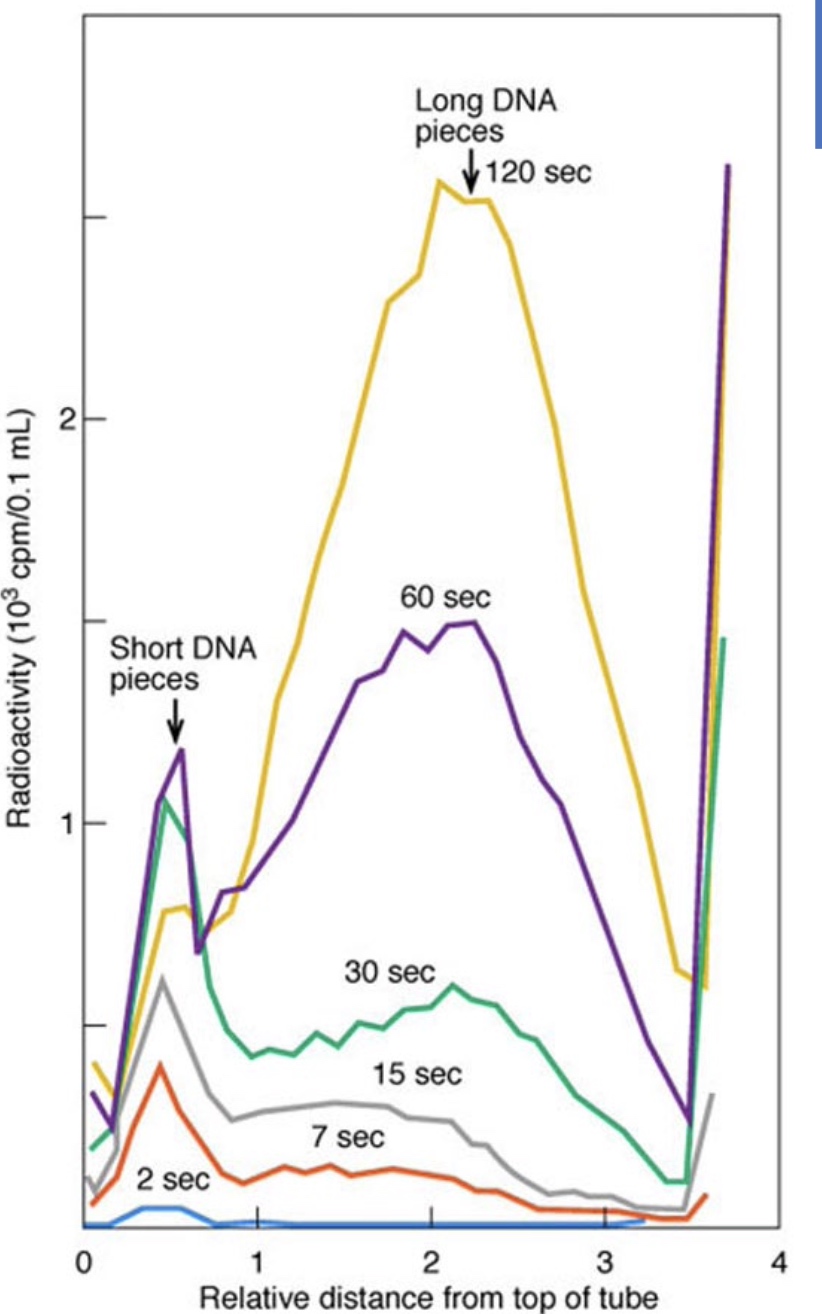
After they use T4 phages with thermosensitive ligase
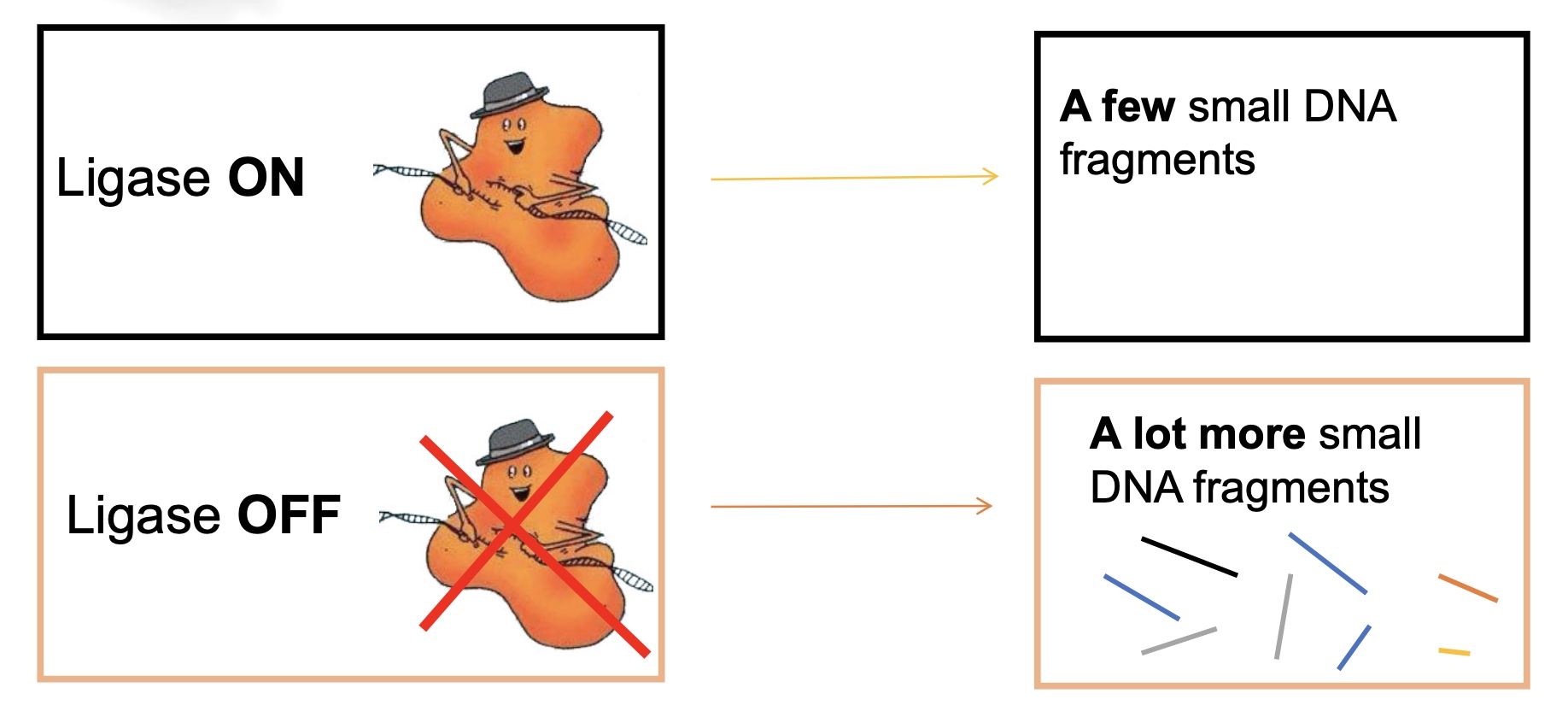
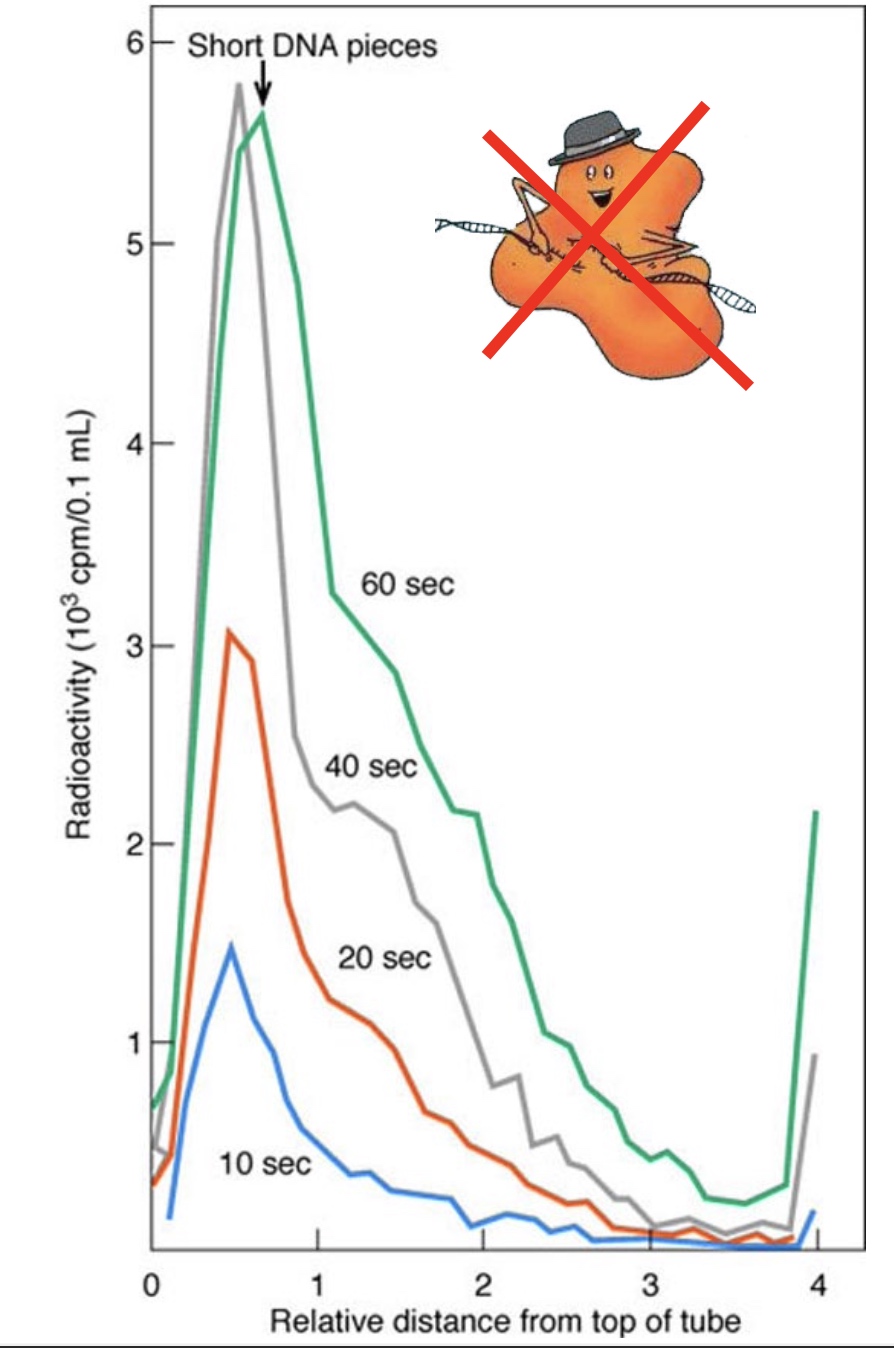
There is no many long strand now, which is wierd.
On leading strand, there may by some error happening. In order to avoid such error happening, DNA want to cut the strand down to get rid of it. But when the ligases are unfunctional, DNA cannot ligate the nicks.
Poll Everywhere Question
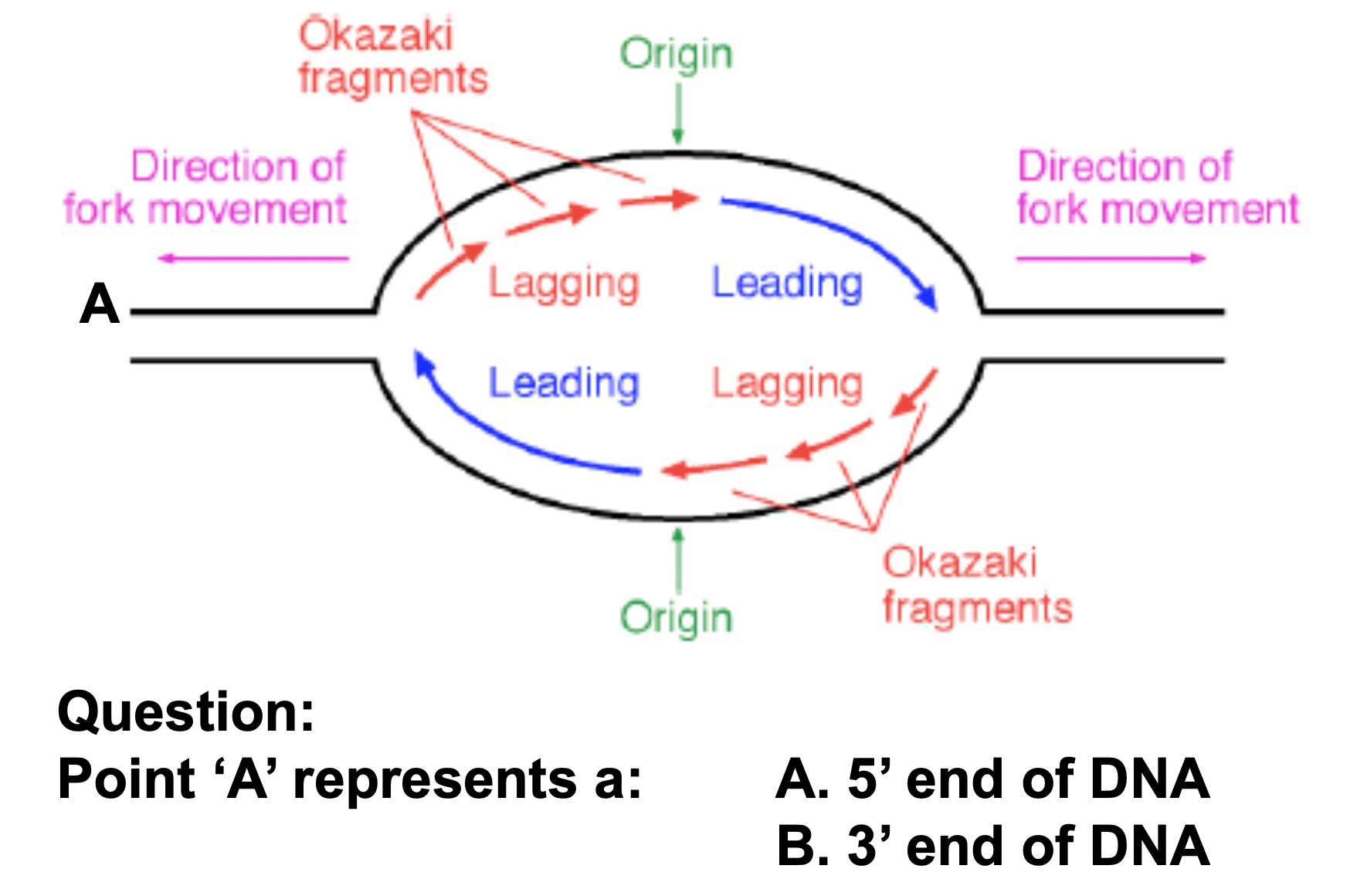
Question:
Point ‘A’ represents a:
- A. 5’ end of DNA
- B. 3’ end of DNA
The fork also moves from 5' to 3' on new strand
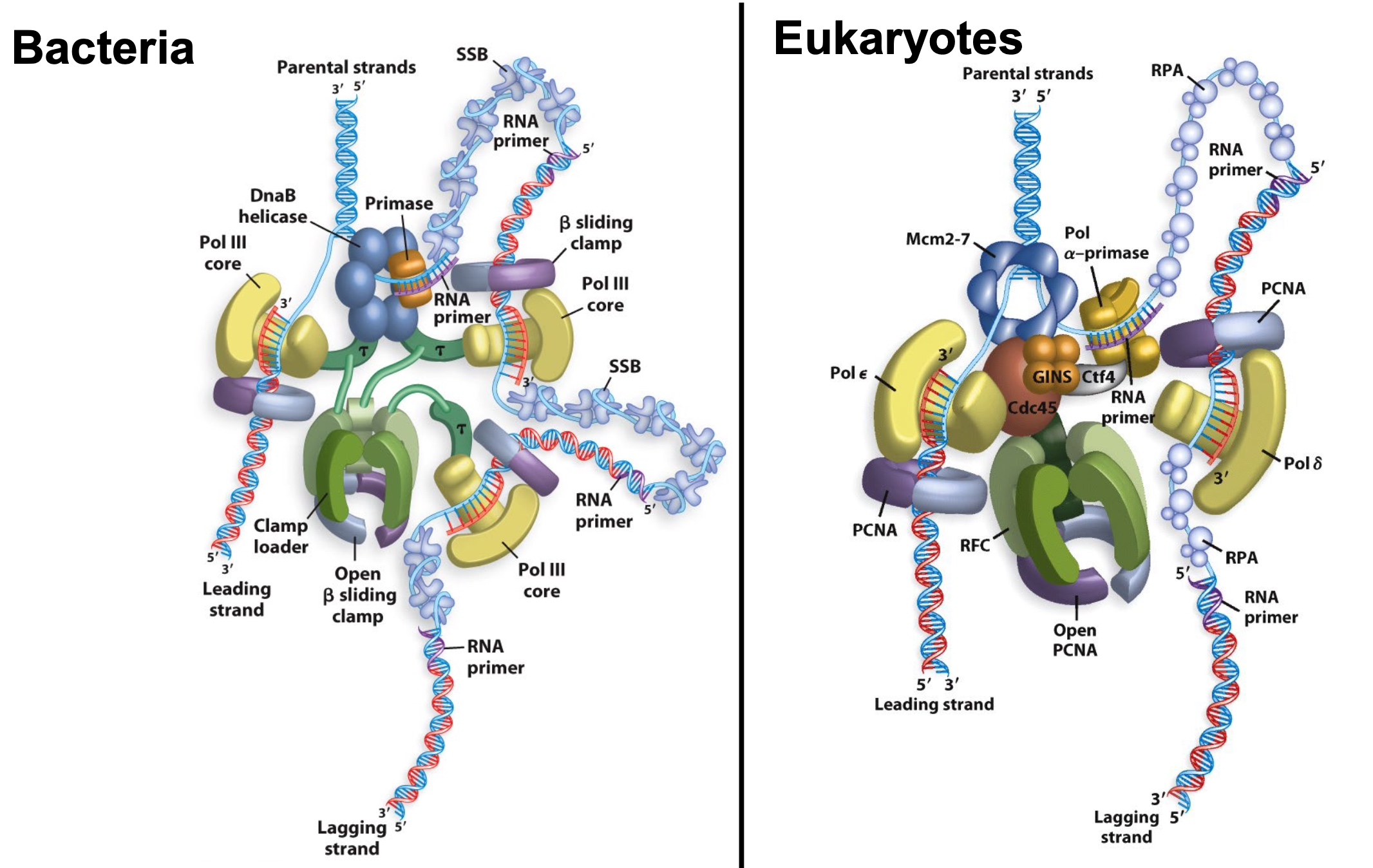
Key Proteins for DNA Replication
DNA Polymerases are Shaped Like a Hand
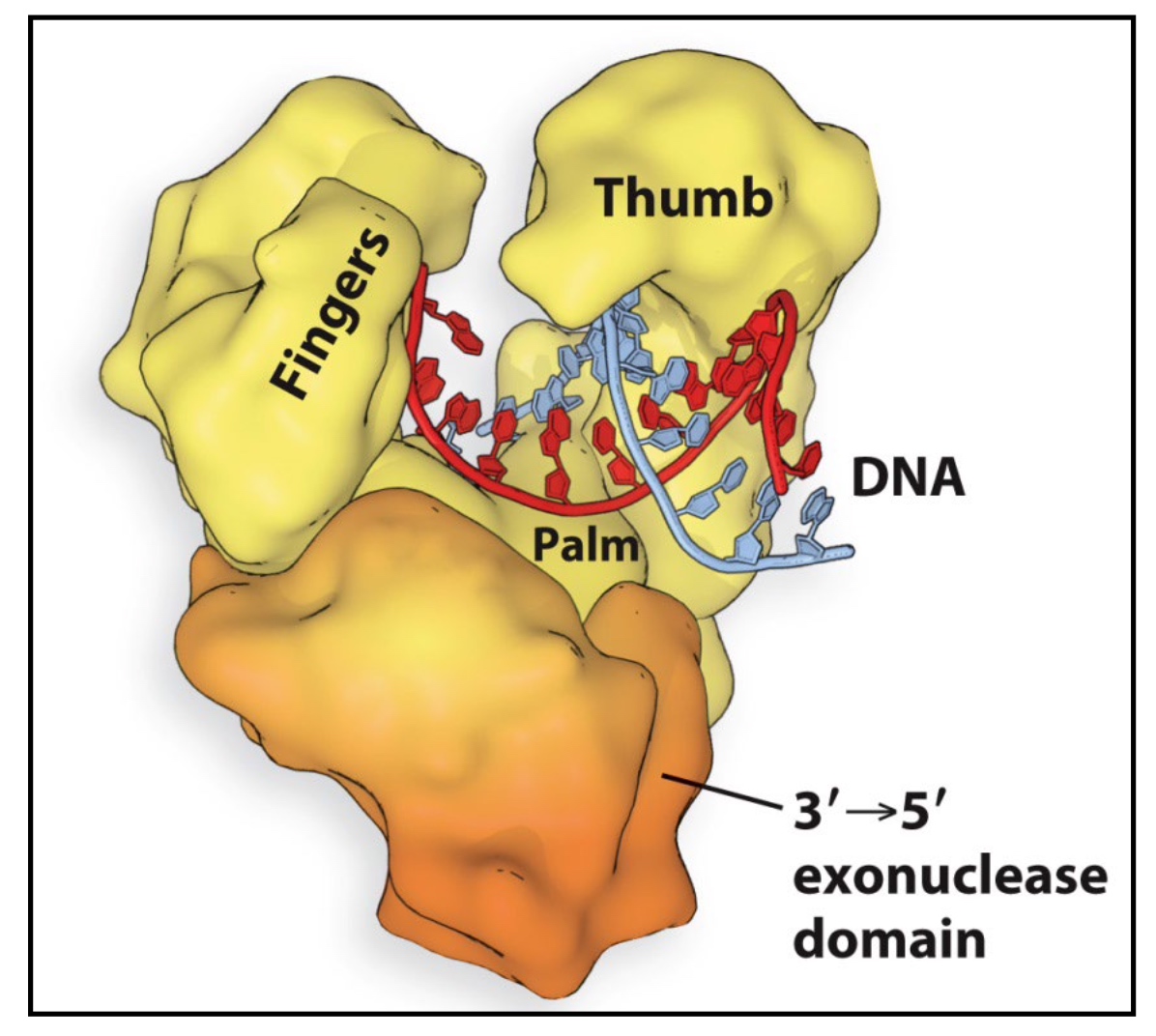
An Alpha Helix in DNA Polymerase Is Responsible For Stabilizing the Nascent Base Pair
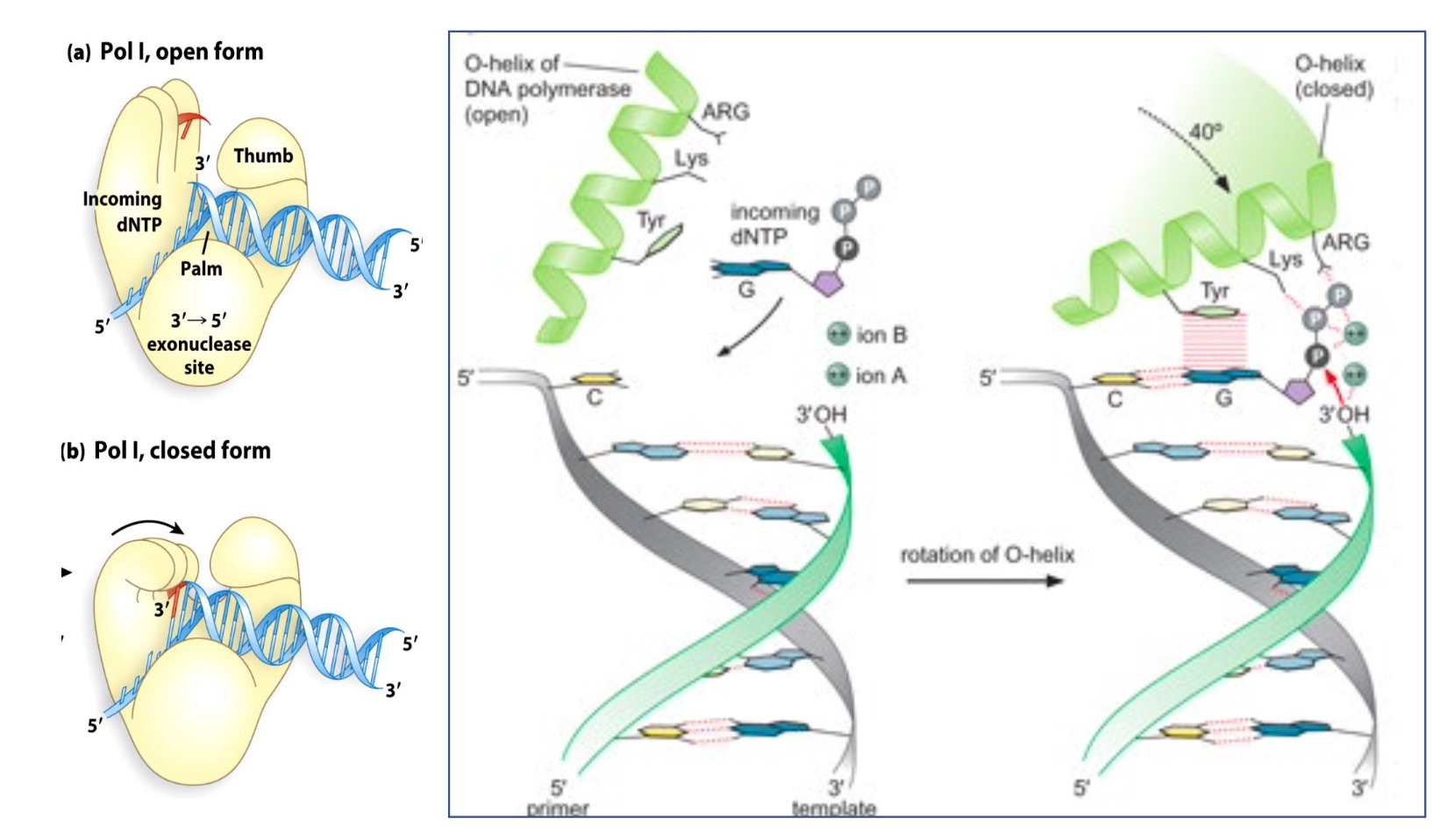
How does a DNA polymerase choose the right base pair?
All in the molecular geometry
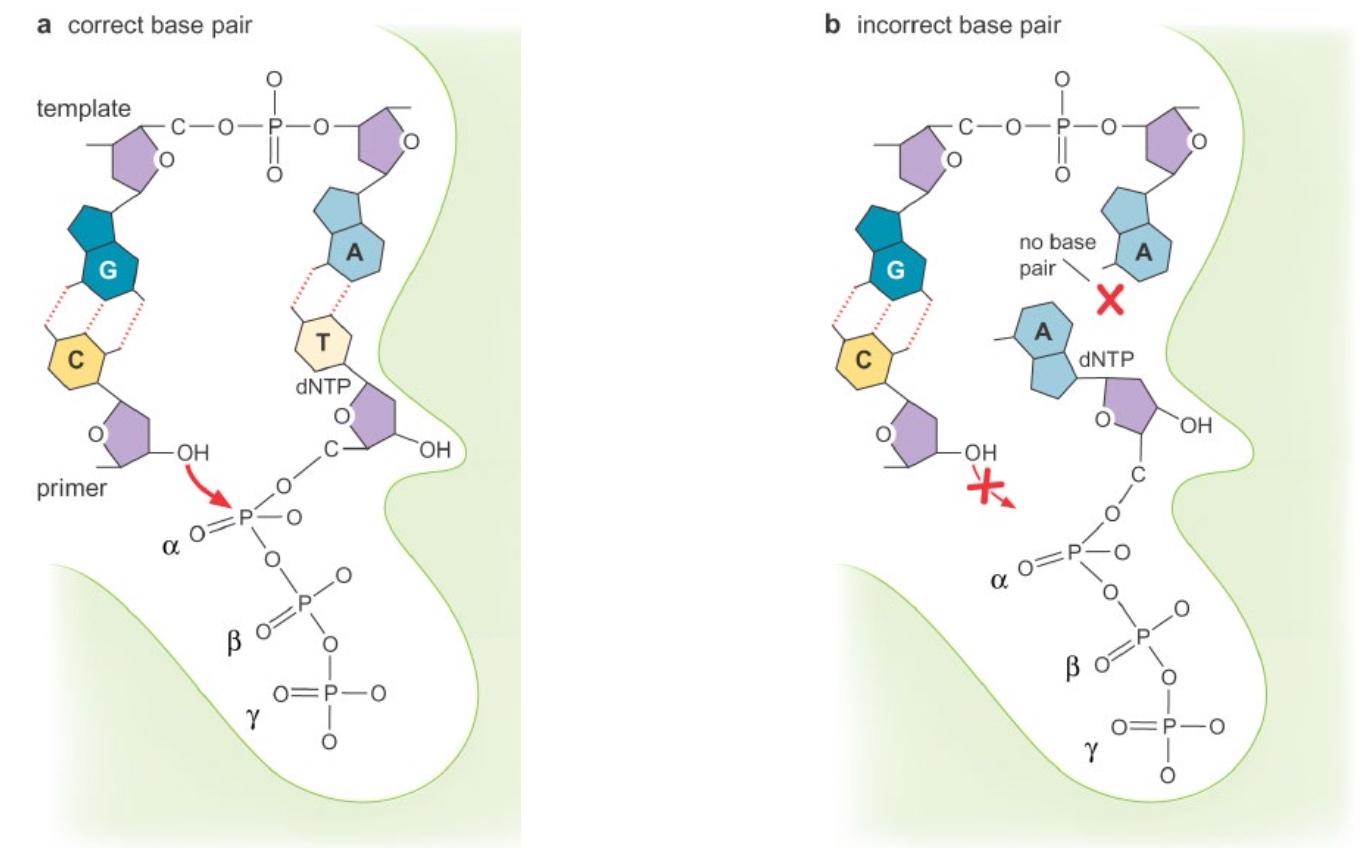
Metal Ions are Important for DNA Polymerase Catalysis
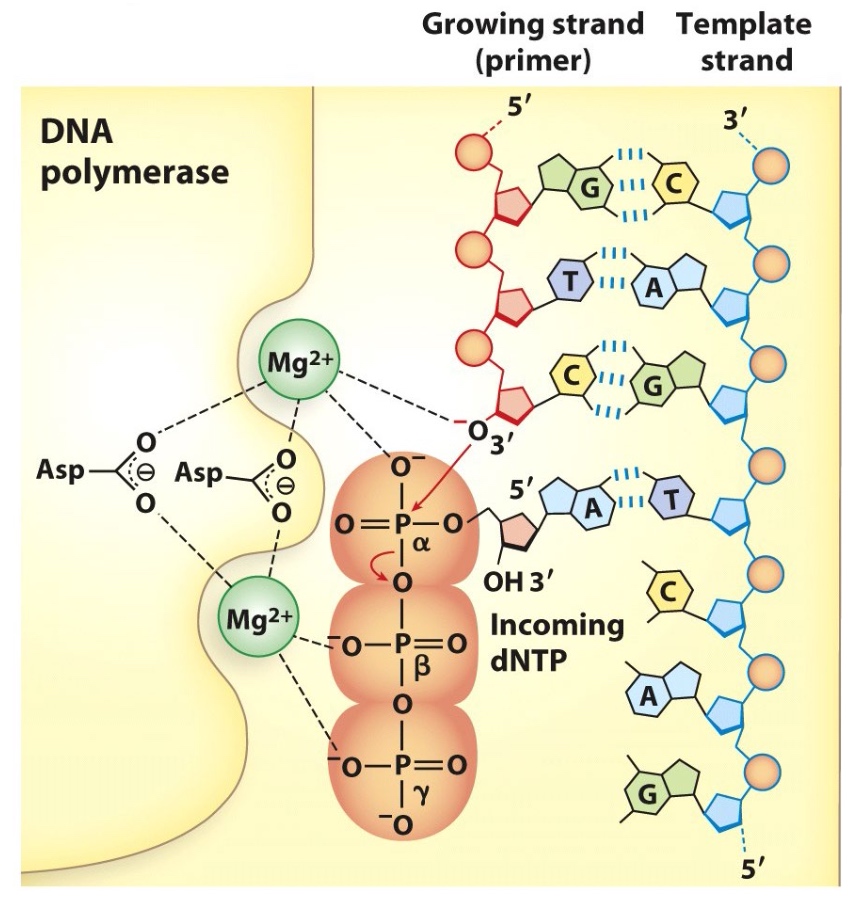
E.coli DNA Polymerases I and III Possess Proofreading Function
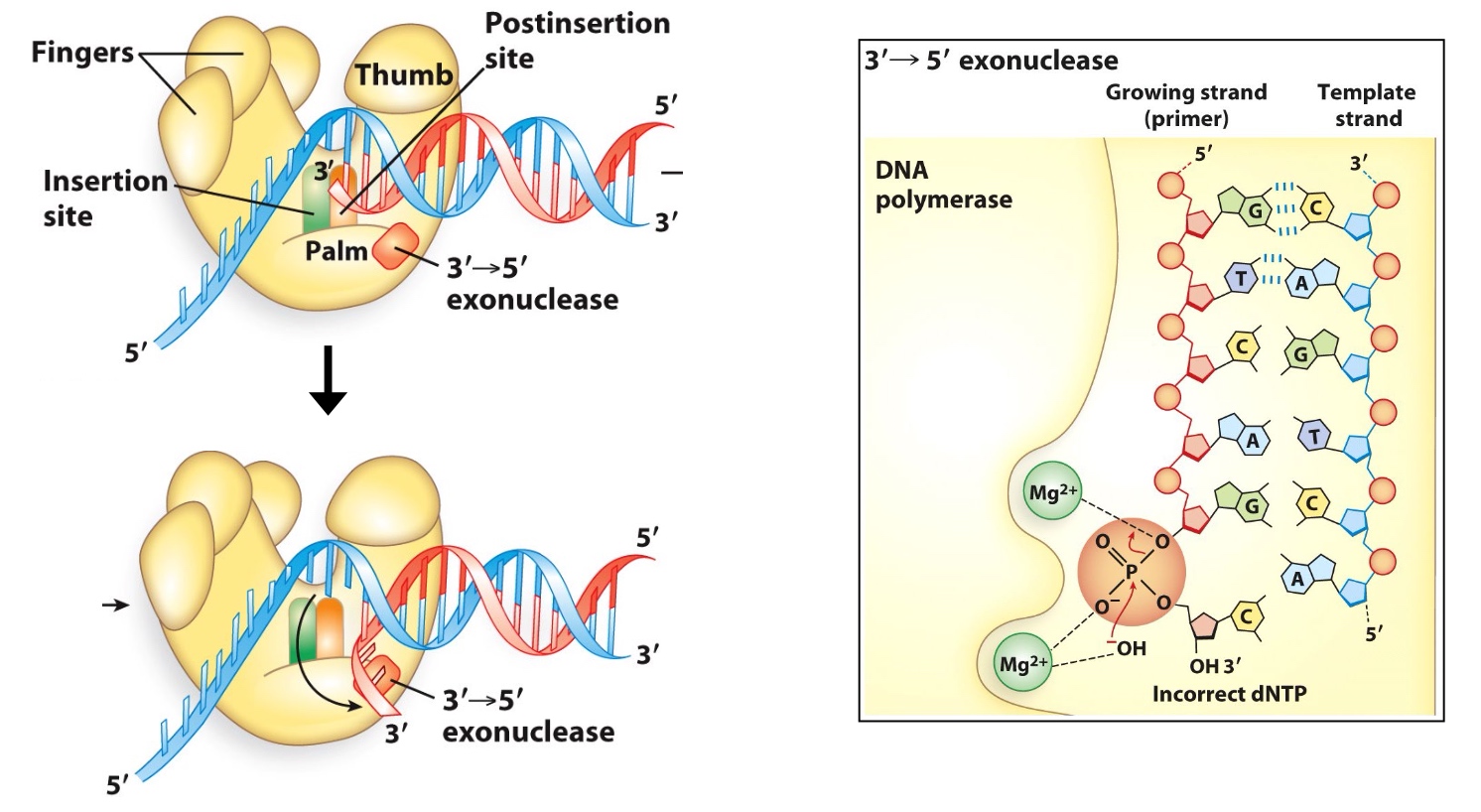
E. coli DNA polymerase I is also an exonuclease, which is able to remove RNA primers.
The exonuclease move from 3' to 5' to remove the wrong pairs. We can see the metal ion coordinating with hydroxyl group to attack this bond. It is going to release the incorrectly inserted dNTP
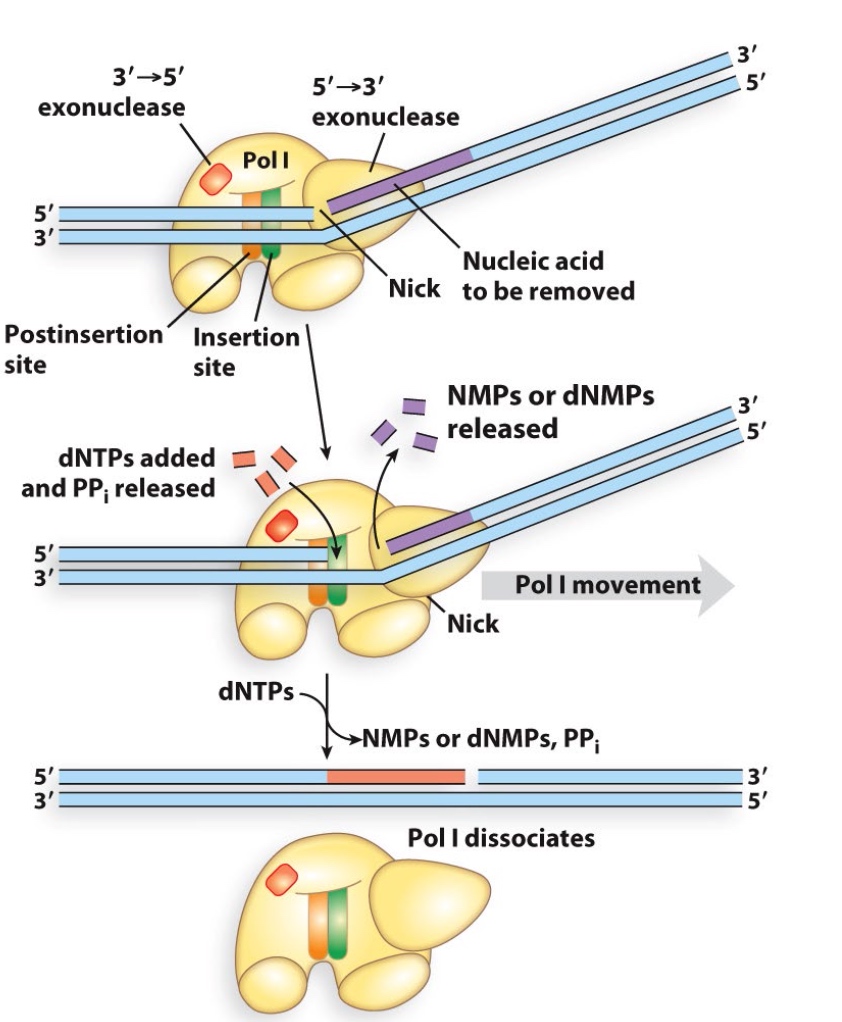
Poll Everywhere Question
What would you predict would be a property of a DNA polymerase whose polymerase active site is larger than normal?
- A. It should be unable to synthesize DNA
- B. It should have decreased fidelity relative to a normal polymerase
- C. It should have a more active exonuclease activity
- D. It should have enhanced proofreading function
- E. It should only be able to synthesize RNA
